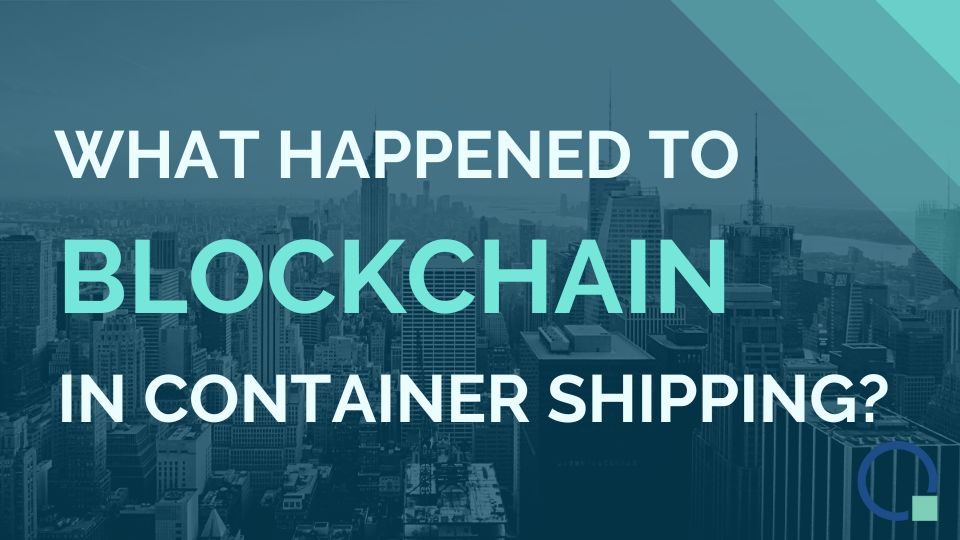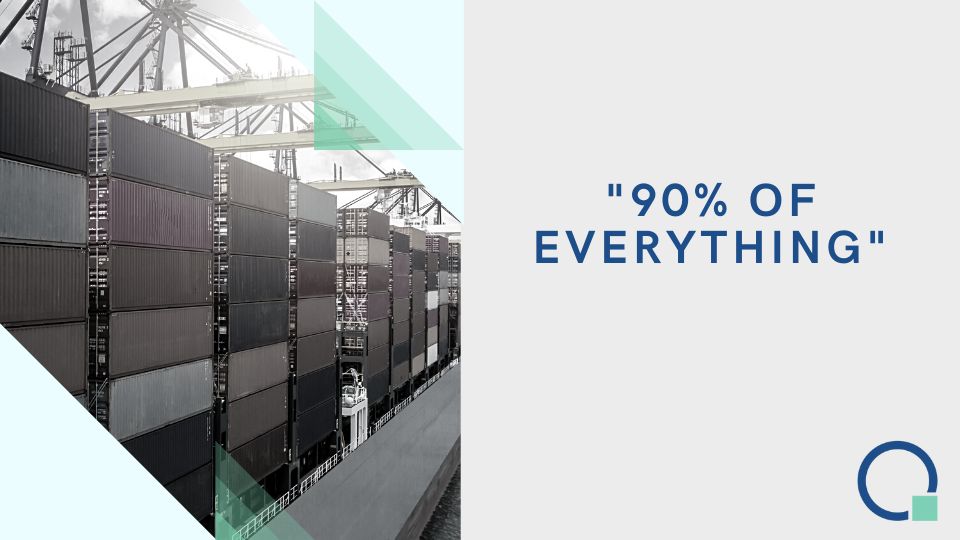What Happened to Blockchain in Container Shipping?
Do you remember when Blockchain was on the first page of every digital newspaper? It was not so long ago – in 2018-2020 everyone was talking about the digital revolution and many different ways in which blockchain will transform the traditional and conservative container shipping industry. Various experts on numerous forums created a lot of hustle around this subject, and it was fueled up to the maximum when Maersk announced a blockchain project TradeLens together with IBM.
Then we all got distracted by COVID-19, and the blockchain got slightly out of the radar. Recently, at the end of 2022, Maersk announced the closure of the TradeLens. If you go to the TradeLens website, you will see a farewell message right at the top of the page that reads:
“TradeLens was founded on a bold vision for global supply chain digitization as an open and neutral industry platform. This vision centered on the ability to enable true information sharing and collaboration across a highly fragmented industry globally.
Unfortunately, such a level of cooperation and support has not been possible to achieve at this point in time and A.P. Moller – Maersk (Maersk) and IBM have announced the discontinuation of the TradeLens platform.
We would like to express our sincere thanks for those that interacted with TradeLens since 2018. We are honored to have been part of your digitization journey.”
So what did happen to TradeLens and the whole Blockchain technology initiative? Can we call it a failure or is there more to come?
The Blockchain
Blockchain technology has matured and moved beyond the initial hype, entering a phase where its real-world applications are being explored and developed. As with any other technology, initial excitement often gives way to a more measured and focused approach. The focus now is to identify practical use cases that provide genuine value and solve real-world problems. This shift has led to more targeted discussions and implementations rather than broad generalizations about blockchain. Many organizations are exploring how blockchain can enhance their operations, but the integration process often happens behind the scenes and is not always widely publicized.
Blockchain faces certain scalability and technical challenges, especially when it comes to processing large volumes of transactions quickly and cost-effectively. While progress has been made in addressing these issues through various scaling solutions, they remain ongoing areas of research and development. The technical nature of these discussions may make them less prominent in mainstream conversations. In simple words, it’s getting overcomplicated for the general public.
While the hype around blockchain had gone back to the IT community, the technology continues to evolve, and its potential impact remains significant. Ongoing research, development, and real-world implementations are shaping the future of blockchain.
TradeLens
TradeLens is a blockchain-based platform for supply chain management developed by IBM and Maersk. It aims to improve efficiency, transparency, and security in global trade by digitizing and automating various processes. Since its launch in 2018, TradeLens has gained support from several major shipping companies and port operators, indicating its potential for success. These include companies like Pacific International Lines (PIL), CMA CGM, Hamburg Süd, and PSA International.
However, implementing blockchain technology in complex industries like global trade and supply chain management presented lots of challenges. Some potential obstacles that could affect the closure of the TradeLens project or any blockchain experiment in the field may include:
- Adoption: Achieving widespread adoption of new technology can be challenging, especially in industries with multiple stakeholders such as container shipping. Encouraging all relevant parties to join the platform and integrate their systems can be a time-consuming process.
- Interoperability: Ensuring seamless data sharing and interoperability among different participants’ systems can be a complex task. Integrating legacy systems with a new blockchain platform may require significant effort and technical expertise.
- Regulatory and legal considerations: The regulatory landscape surrounding blockchain technology and global trade may vary across jurisdictions. Compliance with existing laws and regulations and addressing potential legal barriers can be a complex process.
- Scalability and performance: Blockchain technology, while offering advantages in terms of security and transparency, can face challenges related to scalability and performance when dealing with large volumes of transactions and data.
- Return on Investment:
Last but not least, there is a financial aspect that is extremely significant for any project of such scale. All of the above obstacles have to be heavily funded to be resolved. But it seems that the companies were not looking forward to investing in it for an indefinite period of time. As formulated by Rotem Hershko, Head of Business Platforms at A.P. Moller-Maersk, “TradeLens was founded on the bold vision to make a leap in global supply chain digitization as an open and neutral industry platform. Unfortunately, while we successfully developed a viable platform, the need for full global industry collaboration has not been achieved. As a result, TradeLens has not reached the level of commercial viability necessary to continue work and meet the financial expectations as an independent business.”
It’s essential to consider that the success or failure of an experiment like TradeLens may depend on various factors, including industry dynamics, market conditions, and technological advancements.
There are still numerous logistics startups working on innovative solutions with blockchain technologies. Areas such as supply chain visibility, operations optimization, and digital freight platforms continue to attract startup activity and consequently, venture and corporate investors. The logistics industry is vast and ever-evolving, and there is a chance we will see the re-birth of TradeLens in a new form. Will definitely watch this space.


